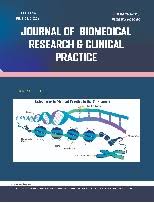Prevalence of Anti-A and Anti–B Haemolysins Among Blood Group 'O' Donors in Makurdi, Nigeria
Keywords:
Blood Donors, Haemolysins, Makurdi, PrevalenceAbstract
Blood group O donors are inappropriately called “universal donors.” These donors could become potentially
“dangerous” if haemolysins are detected in their plasma. This study determined the prevalence of anti–Aand anti–B
haemolysins among blood group O donors in Makurdi, Benue State. Three hundred and five voluntary group O
donors were screened for anti–A and anti–B haemolysins using the standard tube technique and samples showing
haemolysis were titrated for anti A and anti B haemolysins. The overall prevalence of anti–A and/or anti–B
haemolysins was 66.2%. Prevalence of anti–Ahaemolysins was 6%, anti–B haemolysins 14%, and both was 45.6%
of blood donors. It was concluded the prevalence of anti-A and Anti-B haemolysins is high among blood group O
donors in Makurdi. In high titres, these lytic (lgG) antibodies may induce haemolysis leading to a haemolytic
transfusion reaction during blood transfusion.To prevent this potential adverse event, it is recommended that the
transfusion of blood group identical units remains the best practice in the blood bank. However, where this is
impracticable, blood group O donor units should be screened so that units with high titre haemolysins will be
identified and avoided for non-O blood group recipients as well as utilization of washed blood group O red cells in
dire situations where group O blood will be used for non-O recipient





